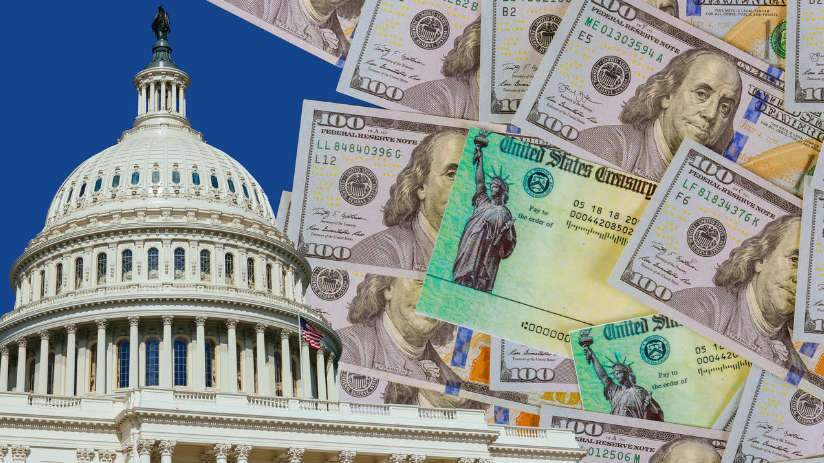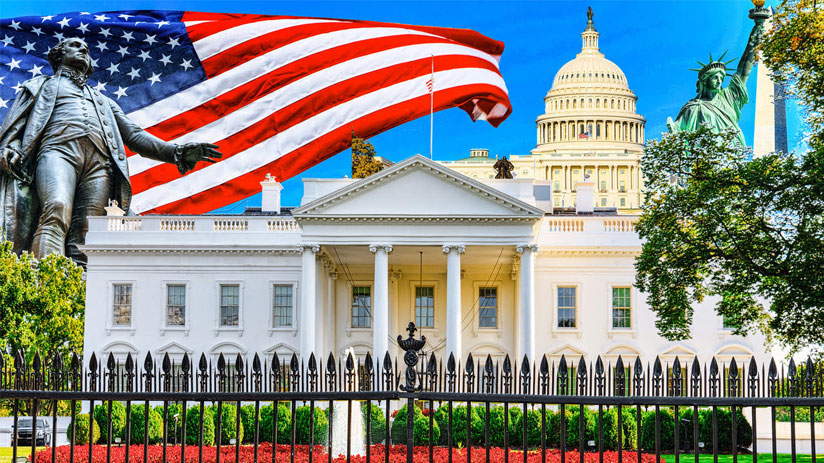
Path to enduring agreements: build trusting relationships; share interests; create value as you address interests; distribute that value.

By Thomas Wood
We tried to restrain ourselves from commenting in our negotiation workshops these last two months on the drama going on near our Washington, DC offices as the US President and Congress negotiated the US debt ceiling, with the President’s signature healthcare legislation – Obamacare – as the bargaining chip. Careful to stay neutral, but always alert to the strategy angles, we now have a few things to say, and they are all seeped in the fundamentals of negotiating. This Energizer Bunny just keeps on giving!
Negotiations to reopen the shuttered federal government and raise the nation’s debt ceiling were notable for one side’s insistence that it wasn’t negotiating at all. But despite the claims of President Obama and other Democratic leaders that they wouldn’t bargain over what they described as the basic functions of government, in the end they worked out a deal with their Republican adversaries. Most of us just don’t mean it when we say we won’t negotiate.
What other negotiating lessons can we learn from Washington’s latest fiscal crisis? At least five fundamentals.
1. The first is that preparation takes time. Although the partial shutdown of the federal government caught many Americans by surprise, defunding the government as a strategy for derailing health care reform was a plan in the making by an important faction of the Republican Party. President Obama, for his part, apparently decided in 2011—in the midst of another debt-ceiling confrontation—that he would never again negotiate over whether Washington should have enough borrowing authority to pay its bills. As it generally does, this early planning affected the outcome of the negotiations.
2. Another prominent feature is the power of deadlines. Deadlines often figure in negotiation—sometimes proposed to spur action in a cooperative way, sometimes wielded as a weapon by one side to intimidate the other.
Government funding was due to expire October 1 and the Treasury’s borrowing limit (the “debt ceiling”) would be reached on October 17. There was a difference between the two, however: the first was acknowledged by both parties to be justified and absolute, since it was the statutory end of the government’s fiscal year. The second was a less concrete estimate by the Treasury. Some Republicans probed this second deadline, suspecting it was arbitrary and changeable. Though the GOP was criticized for questioning the precision of the debt ceiling deadline because the consequences of default were so severe—regardless of exactly when it was triggered—in less drastic situations such probing of deadlines is entirely appropriate.
3. Third, our approaches can evolve as the negotiations evolve. Like most political confrontations, the strategy when this negotiation began was competitive. Each side felt it had right on its side and demanded the other yield. The Republicans, however, almost immediately shifted to what they presented as a compromise strategy, inviting the President and other Democrats to talk out their differences. But Democrats felt secure enough in their position—and viewed the GOP proposals as so unreasonable—that they didn’t feel pressured to go along. This is not usually a practical strategy for ongoing relationships such as the President and Congress must maintain, but such is the degree of political polarization in Washington today. Eventually, to break the weeks-long deadlock, Democrats joined in the compromise strategy, which seeks to give something to each side.
4. Fourth, positions are merely one way to satisfy interests. That’s why positions move in negotiations. The general wisdom is that the Republicans got much less than the President out of this compromise settlement, but some commentators think that viewpoint is confusing positions with interests. In fact, Republican positions changed over the course of the negotiation: beginning with a demand to defund or delay the implementation of the Affordable Care Act (Obamacare), then moving to other tax and spending issues, and eventually to policies disconnected from the budget.
But Republican interests remained the same throughout: a smaller, less intrusive federal government funded by lower taxes. Viewed that way, even though health care reform was only slightly modified, a central GOP interest was served by maintaining existing spending restraints in the temporary budget adopted as part of the deal.
5. And last, without a strong Plan B or BATNA, there is little likelihood of a big win. One reason President Obama could at least in the beginning maintain that he was not negotiating, and in the end get more of what he wanted, is that the other side began the process without apparently developing a strategic Negotiation Envelope. This is a planning tool that maps out wants (Most Desired Outcome), reasonable expectations (Goals), fallbacks (Least Acceptable Agreements) and “Plan B” (Best Alternative To a Negotiated Agreement—BATNA). The most aggressive GOP leaders of the confrontation seemed to have identified a lot of Most Desired Outcomes, but not one Least Acceptable Agreement. And there was no viable BATNA, since the public would not put up indefinitely with a closed government or with the economic chaos caused by a national default.
Perhaps that’s the principle negotiating lesson of the federal fiscal crisis of 2013: set a reasonable goal and chart a path to get there. Whatever the merits of the Republicans’ politics and policies, their negotiating strategy may need a recalculation.

By Leslie Mulligan
All of us want to see professional sports up and running again, and MLB could be the first post-Covid-lockdown. But only if the Major League Baseball (MLB) with its powerful, moneyed owners and the Major League Baseball Players Association (MLBPA), a seemingly united players union, can bridge their financial divide on players’ salaries. But deadlines force concessions: if Opening Day does not come by early July, there is no hope for a season this year. Which means we MUST be in the final stages of a 2020 baseball negotiation!
On March 16, the baseball season was formally postponed by MLB due to Covid-19, till at least mid-May, but with hopes of still playing a full schedule, as documented in this CBS Sports timeline.
Both sides were eager to plot a path forward and so convened at the negotiation table on March 26 to define what opening up again would look like. At that moment, the owners and the players were willing to tackle the health and safety challenges ahead, and also agreed to pro-rated player salaries on whatever might remain of the season. After all, no one wanted a repeat of the 1994-1995 season where the US national pastime stopped abruptly on August 11, when Collective Bargaining Agreement talks broke down. Public sentiment for baseball took a hit that year with no World Series; both sides want to avoid reliving that history as a result of Covid-19.
Owners and players were “on the same page” on March 26, trusting each other to forge ahead together. Normally, major leaguers trust MLB owners to ensure their livelihoods with generous salaries, but with Covid-19 looming, players now were trusting MLB with their lives as well. Trust is crucial to any successful business partnership, but most certainly to the negotiations that serve as the foundation of an alliance.
Since late March, MLB and the players union seem to be successfully negotiating health and safety issues for the athletes as they take the field again, both in spring training as well as on the field, although some open issues remain. But one financial element became a significant obstacle -- player compensation. MLB expected that when the season started, they could play in front of their fans, and their initial proposal was based in part on the expectation of stadium revenue.
Without fans, the owners realized they could lose more than $640,000 per game, with no gate receipts or merchandise/food & beverage sales. That March 26 agreement was swept off the table with this new premise, as it was clear that  baseball stadiums would not soon be filled with cheering fans. It’s not unusual that mid-negotiation, assumptions about the future change -- raw material prices rise, mergers occur, markets collapse, and in this case, a pandemic shuts down the gathering of fans – the crucial element to profit. Both sides went back to their camps to reconsider. The players expected to ensure that their salaries remained “whole,” but were willing to pro-rate their overall income, depending on the number of games played. And of course they want a longer season as a result. The owners insisted that with their revenue cut due to empty ball fields, they expect the players to share that loss by only earning some percentage of their pro-rated salary – the % to be negotiated.
baseball stadiums would not soon be filled with cheering fans. It’s not unusual that mid-negotiation, assumptions about the future change -- raw material prices rise, mergers occur, markets collapse, and in this case, a pandemic shuts down the gathering of fans – the crucial element to profit. Both sides went back to their camps to reconsider. The players expected to ensure that their salaries remained “whole,” but were willing to pro-rate their overall income, depending on the number of games played. And of course they want a longer season as a result. The owners insisted that with their revenue cut due to empty ball fields, they expect the players to share that loss by only earning some percentage of their pro-rated salary – the % to be negotiated.
The next MLB Proposal came in early May: “MLB and the owners will seek additional pay reductions from the MLBPA to account for the revenue lost by not having fans in the stands. MLB will propose a 50/50 revenue split in 2020.” The players were NOT having it – a 50% cut when they had anticipated 100% of their per game salary. Any trust that existed in late March eroded quickly – as Jeff Passan of ESPN wrote on May 26: “Trust, on the other hand, is hard to come by, and if this thing falls apart -- if the absence of a good-faith negotiation dooms the 2020 baseball season -- it won't be directly because of the coronavirus pandemic. It will be because of the erosion of trust in recent years among the leaders on both sides poisoned and polluted the landscape to an extent that a deal never was going to happen in the first place.”
The MLBPA challenged the owners to produce the data showing the financial losses that the owners claimed. In any negotiation, each side more easily comes to an agreement when they feel the offers are fair. Challenging data is often key to one side accepting an offer. Already the players felt disadvantaged, stressing that the health risk falls predominantly on the players taking the field, so the data needed to be reviewed and assessed to show more games produce greater losses.
But neither players nor owners want to be painted as the villains in this play, so discussions have continued, with the clock ticking loudly.
A number of proposals have gone back and forth since that first MLB offer; fortunately, the health and safety challenges are being collectively and successfully tackled by both parties. However, financial hurdles persist. Neil Paine of FiveThirtyEight.com provides a deep dive into the MLB financials yet concludes “it still seems like all parties involved have too much to lose not to come to a compromise.” Some creative solutions have been introduced, with the potential deferral of salaries in the event the post-season is canceled, but owners pushed back on that. Even wealthy team owners are nervous about an uncertain future, and some have voiced concerns about already being maxed out on credit lines.

So for a 2020 season, what alternatives does either side really have, if any? In the lexicon of negotiation, what are their Best Alternatives to a Negotiated Agreement (BATNAs)? MLB and the owners believe they can unilaterally implement a shorter schedule season, but they risk the wrath of the players if they do. How the players react to that will be telling. Will they walk away and forego all 2020 salaries, citing health risks? Or will they file grievances that would take months to work through in arbitration and still may not conclude satisfactorily for either party? BATNA’s are never ideal!
So where does that leave the baseball fan now? The reality is that in negotiations deadlines force concessions! And MLB wants to get a 3-week spring training underway as soon as possible so that they can target a July 4th Opening Day. Why is that? Oddly enough, it is with the end in mind! The Washington Post’s Dave Sheinin writes “MLB believes it needs to complete its postseason, its primary driver of industry revenue, by the end of October to guard against a potential second wave of the coronavirus.”
As of June 8, the latest MLB proposal was for a 76-game season, with 75% of pro-rated salaries, but not all of it guaranteed. Only 50% assured, based on the regular season; if the post-season is canceled, the remaining 25% disappears. Once again, the players have pushed back. But the MLBPA response is due June 10, ironically the day they had hoped spring training might begin. Who has more to lose? Owners or players? I think it’s the stakeholders – baseball fans. Let’s see if some trust can be regained in these final weeks, as July 4th is not that far off – that looming deadline should push both parties back to the negotiation table in earnest. Let’s hope we all hear “batter up” soon!

By Leslie Mulligan
Businesses had to sharpen their negotiation skills as markets and supply chains endured enormous pressure in 2020. Now it’s the U.S. president’s turn to demonstrate his negotiation expertise in passing the $1.9 Trillion Covid-19 Relief Bill. Is he willing to collaborate with Congress, or will he take on a competitive approach? And how will the Republicans respond?
President Biden has made it his mission to tackle the devastating pandemic – it is the very first priority listed on the White House website. Specifically, he has vowed to get the massive $1.9 trillion coronavirus relief package passed in U.S. Congress and ensure Covid vaccines are distributed as rapidly as possible. Time is of the essence as the economy remains weak; many still face desperate times. Yet President Biden has also pledged a bipartisan approach to governance and wants to unite the country – so how do you negotiate effectively with Congress in this still polarized landscape to deliver on these promises; or do you?
Bipartisanship Approach?
Will a collaborative (win-win, interest-based) or even compromise approach produce bipartisan approval, or will the Administration have to take a competitive approach (win-lose) to get results.
Emerging from the last presidential election, the USA is seriously divided, no doubt about it. Yet President Biden is on a quest for unity, including in his Congressional relationships. As a long-serving alumnus of the Senate, he underscored the need for bipartisanship: “I think I can work with Republican leadership in the House and Senate. I think we can get some things done.” But will Republicans reciprocate – will they work with the president and their Democratic colleagues? We don’t know what is happening behind the scenes, but the president has only publicly met with 10 Republican senators in early February to discuss the Covid relief bill. And Republicans have felt rebuffed by their

Congressional colleagues: “…they were frustrated that their views weren’t being considered as Democrats pushed the legislation forward without GOP support”. This may foreshadow a competitive stance.
And yet, President Biden has the support of the American public writ large – even Republicans: “Half of all Republicans believe that President Joe Biden's $1.9 trillion COVID-19 relief package should be passed because of the proposed round of $1,400 stimulus checks, according to a new poll.” 73% of all Americans support this bill, according to a Navigator Research poll last week. Bipartisanship can be achieved in the public domain – that has certainly been realized in the run-up to the passage of this bill. But will any congressional Republicans come on-board? Jen Psaki, the White House Press Secretary, put this question succinctly when asked about Republican support: “Obviously, Republicans in Congress will have to make their own choice about whether they support the final package. But the vast majority of the public supports it, including the vast majority of most members’ constituents. So it’s really a question for them.”
But will Democrats entice them to support a negotiated bill, with a willingness to compromise by giving in on some of what’s been proposed, if not collaborate by finding new solutions that satisfy both parties? Or simply use a heavy-handed competitive approach to get what they want. The overriding negotiation strategy used here may set the tone for the next 4 years.
Time
Time is almost always a factor in negotiations. There is an adage in negotiating – “deadlines force concessions”. And President Biden feels the pressure of a looming deadline. On March 14th, over five  million people will lose their weekly $300 federal unemployment benefit. The PPP program runs out for small businesses on March 30th, and the airline industry may take a big hit as $15B in federal funds that subsidize payrolls also expires. But will Congress feel the same pressure of this deadline? Assuredly the Democrats largely will. But Republicans may resist the pressure, advocating that previous stimulus bills have set the stage for recovery - the trajectory is positive. Could Republicans use time as leverage to get more of what they want? All politicians have a political calculus even while making policy decisions – how will these deadlines impact their negotiations across the aisle and with President Biden?
million people will lose their weekly $300 federal unemployment benefit. The PPP program runs out for small businesses on March 30th, and the airline industry may take a big hit as $15B in federal funds that subsidize payrolls also expires. But will Congress feel the same pressure of this deadline? Assuredly the Democrats largely will. But Republicans may resist the pressure, advocating that previous stimulus bills have set the stage for recovery - the trajectory is positive. Could Republicans use time as leverage to get more of what they want? All politicians have a political calculus even while making policy decisions – how will these deadlines impact their negotiations across the aisle and with President Biden?
Policy vs Politics
Great negotiators know that their positions are driven not just by what they can conceivably achieve, but by a greater business or overriding imperative. The same is true in negotiations over legislation. Politics are the quintessential overriding imperative that drives what each legislator is willing to do.
“Negotiation in Congress is never solely about policy; politics and policy are always intertwined”, per the Task Force Report published in December 2013 by the American Political Science Association (APSA), Negotiating Agreement in Politics, which sheds light on the challenges of American political negotiations. There are valuable lessons in that report, with pragmatic advice for all parties at the Congressional negotiation table. One truism comes from former Rep. Barney Frank (D-MA): “Nobody pushes for unpopular policies.” And it appears that the Covid relief bill is popular! But elected officials manage their politics to keep their constituents (and donors) happy - they must justify their policy votes. Those up for reelection in 2022 will weigh their policy decisions now against a potentially different political landscape one year hence. In fact, news reports indicate that Republicans believe they are better served to deny President Biden a “bipartisan win” – and so are working to keep their own party cohesive, and plan their own PR push to paint this Bill as “bloated”, disparate and not well-aimed.
Stakeholders
When defining any negotiating strategy, it is paramount to assess who your stakeholders and what their Interests are, and how they impact your plan. When it comes to legislation, there is no shortage of competing stakeholder Interests to address.
President Biden is banking on the American public as the most important stakeholder in this landscape. Most of them enthusiastically support this bill, and the timing is such that now is the opportunity to strike. Big business also supports quick passage of this Bill. Just this week, 150 of the country’s most powerful executives penned a letter to President Biden urging action: “Congress should act swiftly and on a bipartisan basis to authorize a stimulus and relief package along the lines of the Biden-Harris administration’s proposed American Rescue Plan."
Republicans may take the longer view, and assume that their stakeholders, their constituents, will accept resistance to this bill. After all, it may get passed even without Republican support. Then the subsequent policies will help everyone, without Republicans having to go “on record” as supporting a democratic presidential priority. “In short, explicitly partisan political considerations condition the opportunities for deal-making on policy issues,” suggests the learned authors of the ASPA report mentioned earlier.
BATNA’s
No seasoned negotiator enters negotiations without a back-up plan, known as a Best Alternative to a Negotiated Agreement or BATNA. That means both sides of the political aisle have BATNAs in play that they are willing and able to execute.
play that they are willing and able to execute.
Can the Covid relief bill pass without Republican support? Does President Biden have an alternative to a truly bipartisan bill, a BATNA in the lexicon of negotiating? Absolutely – after all, the Budget Reconciliation tool is available to him, now that Congress passed the Senate’s budget earlier in February. As long as the Democratic party stays cohesive, this enables passage of the Covid relief bill with only Democratic support. If Democrats prove each item in their reconciliation bill has a direct budgetary impact, this tool can be used to prevent Republicans in the Senate from filibustering and blocking the floor vote. So inasmuch as President Biden would like Republican support, it is not necessary for passage of this bill. His BATNA is strong, and he is willing to execute it, to ensure the needs of the American public are being met. Republicans too have their BATNA – they can decline to support this Bill, counting on their supporters to look positively on that decision down the road. This is a risk, but will they be willing to take it?
Trades
Negotiators come to the table prepared to trade. And President Biden has indicated some willingness to trade on the minimum wage – its inclusion in the Bill at all, a phased-in timeline to protect small businesses, and maybe even the new wage rate.
There are two factors that complicate this element of the bill. First, Senator Joe Manchin (D-WVA) has said he does NOT advocate for the full $15/hour – although he would support a reduced rate of $11/hour. Second, couple that with the fact that the Senate parliamentarian has ruled that as written, the minimum wage hike does not meet the threshold of having a “direct budgetary impact” – thus eliminating it as is from inclusion in the Budget Reconciliation Bill. This bargaining chip may come off the table entirely when the Bill reaches the Senate, or it may become a viable bargaining chip. The president has said he is open to negotiating the minimum wage. But cohesion among the Democratic senators will still be crucial on other elements of the bill, and keeping Senator Manchin in the fold may be a challenge that President Biden faces beyond just this particular legislation.
Final Thoughts
This bill will get passed, but probably with Democrats taking on a competitive approach ultimately and driving passage without any compromise. President Biden is willing to execute his BATNA and believes that his primary Stakeholder – the American public – needs the relief that it will provide, and will reward his Administration for it. Bipartisanship will have to wait, as the president feels the pressure of the March deadline. The Republican political calculus indicates that they too can take a competitive approach and won’t be penalized by their supporters. But this first interaction between the president and Congress may not bode well for collaboration between the two parties in the future. Time will tell, so stay tuned.
Please provide us with some details and we will be in touch soon!